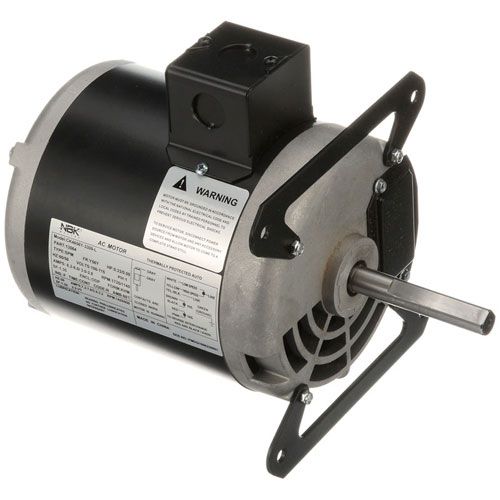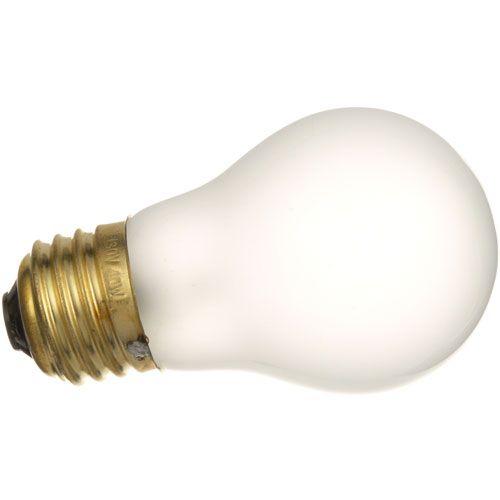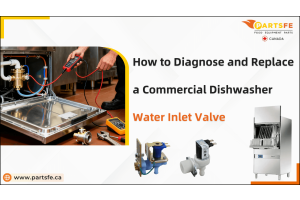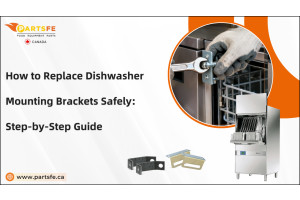Commercial Oven Heating Element Problems: Here's How to Fix
Commercial ovens are essential in many kitchens, and when they malfunction, it can lead to major disruptions. One of the most common issues faced is with the heating elements, which can cause uneven cooking, long preheating times, or total failure to heat. Whether it’s a gas or electric oven, a faulty heating element can be frustrating, but understanding the cause of the problem can save time and money. In this guide, we'll explore the common symptoms of heating element problems, how to diagnose the issue, and provide step-by-step instructions for fixing or replacing the oven heating element. With the right tools and some basic knowledge, you can get your oven back to perfect working order quickly and efficiently.
Understanding Commercial Oven Heating Elements
The commercial oven heating element functions to produce heat after receiving electrical power. The heating elements in most commercial ovens consist of high-resistance metals such as nichrome, which transform electrical energy into thermal energy. The placement of these elements occurs on the top, bottom or sides of the oven according to specific model designs.
The main purpose of heating elements is to heat the oven to reach the required cooking temperature. The element reaches high temperatures when the oven turns on and distributes heat across the oven space for food cooking. The heating element of certain oven models delivers direct heat to food during cooking operations in broilers and convection ovens. Heating elements deteriorate with time because they continuously face heat exposure combined with moisture and environmental elements. Multiple performance-related problems can emerge because of this condition.
Looking to fix your commercial oven quickly? PartsFe CA has you covered with commercial oven parts, including heating elements, temperature probes, control boards, and ignitors. Choose from top brands like Duke, Southbend, and Bakers Pride for reliable performance every time.
Common Causes of Heating Element Problems
Commercial oven heating elements experience problems due to multiple causes. Knowing what causes element failure will enable you to prepare better preventive actions and perform maintenance procedures efficiently.
-
Wear and Tear from Heavy Usage: Commercial kitchens operate their ovens continuously throughout busy daily operations. The element’s structural stability decreases because of repeated heating and cooling cycles, which eventually results in failure.
-
Electrical Issues: Premature heating element failure occurs when electrical surges or poor wiring or voltage fluctuations occur. The element receives incorrect signals from faulty thermostats and control boards that result in element overloading.
-
Grease and Food Buildup: Element failure occurs when excessive buildup results in uneven heating or overheating that causes the element to warp or crack.
-
Improper Cleaning: The combination of rough cleaning solutions and improper techniques, together with water entry into electrical connections, will cause damage to the elements.
-
Overuse: Regular maintenance checks for buildup and loose connections are essential because their absence will cause equipment wear that leads to system failures.
-
Faulty Thermostats or Control Boards: The element operates correctly but fails to receive proper signals because of defective thermostats or control boards.
How to Diagnose and Fix Heating Element Issues in Commercial Ovens
The diagnosis of oven heating element issues needs systematic evaluation. A thorough examination must take place before starting repairs because it is necessary to confirm that the heating element is the actual problem. These are the methods for diagnosing and resolving heating element issues.
Disconnect Power Supply
The process of inspecting the oven without proper safety measures creates potential electrical risks.
Solution: Safety first requires users to disconnect power from the oven before starting maintenance tasks or repair work. The safety of your work environment is guaranteed by following this procedure.
Replace Damaged Heating Element
A heating element that sustains damage will fail to heat correctly and present additional risks to the appliance.
Solution: Check the heating element for any signs of cracks or breaks, along with discoloration. The element must be replaced immediately when damage is detected to maintain proper appliance functionality.
Check Heating Element Continuity
The heating element fails to work correctly when it lacks continuous functionality.
Solution: A multimeter should be used to check continuity because a broken element will not produce a beep sound, so replacement is needed to restore heating.
Inspect Thermostat & Power Supply
The oven fails to reach the proper temperature due to problems with either the thermostat or the power supply system.
Solution: Check the thermostat operation while inspecting the power supply to identify any wiring problems or blown fuses. Thermostat replacement or power supply repair should be performed if necessary.
Replace Lower Heating Element
The lower heating element inside your oven fails to generate heat.
Solution: Examine the element for any visible damage or breaks while using a multimeter to test its continuity. Use a new heating element that matches your oven model when replacing a faulty bottom heating element.
Oven Element Sparking
The oven element produces sparks, which signal an electrical short.
Solution: Check the element while the oven is unplugged to identify any burn marks or visible damage. Check for damage on the element before replacement and inspect all wiring for loose connections or wear.
Oven Fan Not Working
The oven operates with its fan working correctly, yet fails to generate heat.
Solution: The heating element or thermostat malfunction may be the cause of this problem. Use a multimeter to test the heating element before replacing it if needed, while checking the thermostat settings for correct operation.
The failure of the oven element requires immediate diagnosis followed by proper repair to prevent additional damage to the appliance.
Check out this guide on how to fix a broken heating element in a commercial oven to learn more about fixing a broken heating element in a commercial oven.
Preventive Maintenance Tips for Extending the Life of Your Heating Element
Commercial oven heating elements survive longer when you perform routine maintenance operations. The following steps will help you maintain your oven's proper working condition:
-
Clean Regularly: Regular cleaning of your oven and heating elements will stop food and grease, and debris from building up. Non-abrasive cleaners should be used instead of harsh chemicals because these chemicals can harm the element’s protective coating.
-
Avoid Overloading the Oven: The heating element needs to work harder than required when you stuff your oven because poor airflow and uneven heat distribution occur.
-
Inspect Frequently: During your regular kitchen maintenance schedule, you should develop a practice of checking your heating elements visually. Identifying minor element wear at an early stage helps stop more severe breakdowns from occurring.
-
Monitor Oven Temperatures: To verify accurate oven temperature, you should use an oven thermometer. Check with a professional immediately whenever you detect substantial temperature variations.
-
Schedule Professional Maintenance: Regular commercial kitchen equipment maintenance checks should be performed by a professional technician. Professional technicians should calibrate thermostats while inspecting electrical components.
Check out this step-by-step guide to replacing a heating element if you're also dealing with thermostat issues.
Commercial oven heating element problems represent typical maintenance challenges that operators can effectively handle. Your business can avoid both time loss and monetary costs by responding swiftly with proper knowledge when dealing with uneven cooking or complete heating failure, or strange smells.
The proper functioning of your heating element depends on your ability to identify failure signs and make accurate diagnoses so you can replace or maintain it promptly. Regular proactive maintenance, together with spending on quality replacement parts, should be combined with quick professional help when needed. The proper maintenance of your commercial oven, along with its heating elements, will enable your business to benefit from their service for multiple years.
FAQs
How to install an oven heating element?
First, unplug the oven or turn off the circuit breaker to ensure safety. Then, remove the old element by unscrewing it and disconnecting the wires, and install the new one by reversing the process.
How to fix an oven that won't heat up?
Check if the heating element is damaged or burnt out and test it with a multimeter for continuity. If the element is fine, inspect the thermostat, control board, and power connections for any faults.
How to clean the elements in an electric oven?
Wait until the elements are completely cool, then gently wipe them with a damp cloth or sponge. Avoid using abrasive cleaners or soaking the elements to prevent damage.
How to remove the oven heating element for cleaning?
Turn off the oven and unplug it for safety, then unscrew the heating element and carefully disconnect the wires. Once removed, clean it with a soft cloth and mild detergent if necessary.
Can you spray oven cleaner on the heating element?
It is not recommended to spray oven cleaner directly on heating elements, as the chemicals can damage the coating and create harmful fumes when the oven heats up. Instead, clean around the element and wipe it gently with a damp cloth if needed.











